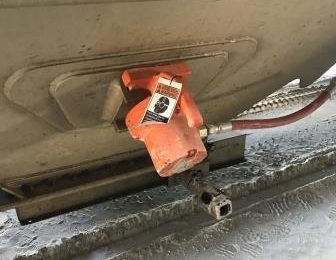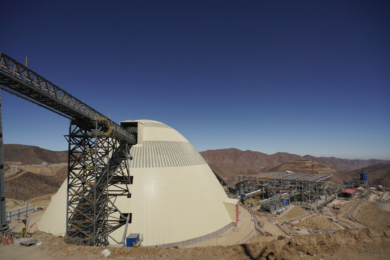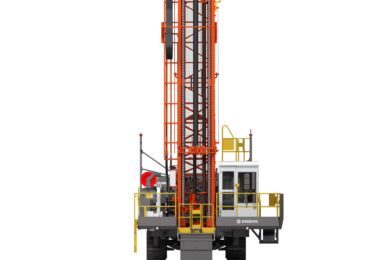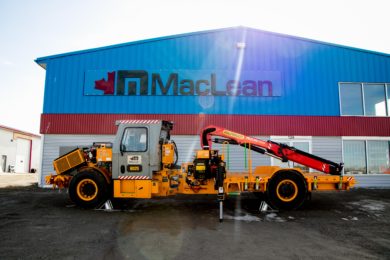A global leader in industrial vibration technology has introduced a portable vibrator that activates the free flow of bulk materials from closed-top hopper railcars. With one of the highest force to weight ratios available in the marketplace, the Martin® IMP3 impacting railcar vibrator delivers the power required to evacuate compacted bulk materials such as fertilizers, bentonite clay, Portland cement, grain and more. The company states: “Extremely high quality standards for the design deliver superior equipment reliability and long service life, allowing the competitively priced units to improve workplace safety with very little maintenance and a low cost of ownership.”
“When a railcar is being emptied, the process needs to be fast, efficient and thorough, because extra time spent unloading, manually cleaning or sending cars back with material in them can translate into lost profits or increased costs,” explained Marty Yepsen, Business Development Manager for Railcar Products at Martin Engineering. “The higher the force to weight ratio, the more force is delivered to the material, increasing the efficiency of the vibrator.”
The IMP3 was purpose-built for unloading dry powdered bulk materials. If vibrators fail, workers may need to resort to unsafe practices to get material flowing again, such as hammering on the cars or attempting to unclog them from the bottom of the hopper.
To avoid these expensive and potentially hazardous scenarios, the IMP3 produces 3000 vibrations per minute (VPM) and 1,542 kg of force, which has been compared to a sledgehammer blow 50 times per second. The rapid impacts generate a vibratory wave through the metal hopper of the railcar, loosening adhered material to promote fast and even flow.
Lifting heavy items is one of the leading causes of injury in the workplace. In 2001, the US Bureau of Labor Statistics reported that over 36% of injuries involving missed workdays were the result of shoulder and back injuries. Over-exertion and cumulative trauma were the biggest factors in these injuries.
The IMP3 replaces a traditional cast iron housing with an aluminium body coupled with a wedge bracket, and it features an integrated handle for easy gripping and moving. The low weight means that more of the energy is transferred from the unit to the hopper.
“Weight and ease of use are important, because transferring the vibrator can be a repetitive motion that produces fatigue and eventual injury,” Yepsen said. “This lightweight unit is designed specifically for constant handling in less-than-ideal environments.”










